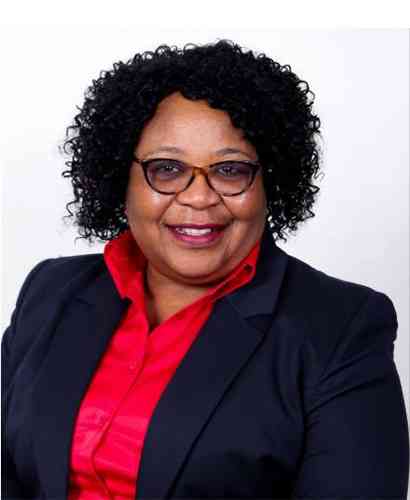
Two announcements in the last month have attracted my attention. At face value they are encouraging and if properly implemented they can stimulate economic activity at the bottom of the pyramid (BoP). However, if these are not carefully implemented or managed, they can turn out to be our worst nightmares in development economics.
By Munyaradzi Nyakwawa
The Reserve Bank of Zimbabwe announced its intention to establish a Micro Finance Institution (MFI), around the same time they announced that MFI lending rates were reduced.
Empower Bank
In line with the National Financial Inclusion Strategy comes Empower Bank. Considering the need for micro credit at the BoP, this has been long overdue. It is my sincere hope that this bank will address MFI branch distribution bias in this country. The majority of Zimbabweans live in the rural areas, yet there are very few financial institutions there, adversely affecting financial inclusion efforts.
For this bank to be successful, there is need to go back to the basics. When the microfinance movement started, its main focus was lending to the poor who were excluded from financial systems. The term microcredit was used to describe the small loans that are given to the poor. However, with the passage of time, microfinance embraced the importance of savings, money transfers and insurance services to the poor.
It is important to bring to the fore is that while establishing an MFI may be critical at this stage, history has many national MFIs that went under. One famous example is India’s Integrated Rural Development Programme. The programme allocated credit according to social targets. Thirty percent of loans were awarded to socially-excluded groups and 30% towards women. There is no better strategy when you consider financial inclusion as a priority than this.
We hope this establishment won’t lead to subsidised interest rates. World over a lot of government led MFIs subsidise interest rates, which undermines the sustainability of the institutions and make it over reliant on government funding. The second problem of subsidising interest rates is the crowding out effect on private MFIs. There is no doubt government participation in microfinance can bring resources and services to millions of financially excluded citizens, however it can deliver a knockout punch to private MFIs.
- Chamisa under fire over US$120K donation
- Mavhunga puts DeMbare into Chibuku quarterfinals
- Pension funds bet on Cabora Bassa oilfields
- Councils defy govt fire tender directive
Keep Reading
MFIs for long have always relied on repeat lending. The sad thing is most government institutions in history have always been reluctancy to follow up on their loan book, thus the culture of non-payment among borrowers.
Regulation
Back then MFIs where unregulated and were successful. Policy makers didn’t have much concern in regulating MFIs. When a Bangladeshi Mahmud Yunus started the microfinance movement, his first loans were given to women. In 1976 Yunus lent $27 of his money to 42 women in the village in his country. By 2006 his bank had 2 100 branches in neighbouring India. Credit goes to the women he loaned $27. Most of his success was in an unregulated environment and the group guarantee played a huge role in getting the women to pay back. A group guarantee may be an option to consider given the lack of collateral in poor Zimbabwe.
The announcement on interest rates has the potential to boost lending to the poor. What is the cost of getting such funds to the poor? With these low interest rates, will the MFIs still be willing to travel the long distance to serve the poor or they will instead increase the loans to their existing customers or relations since it’s now cheaper to borrow. With an inflation rate of around 1,5% a 10% interest rate will mean real return on MFI loans is about 8,5%. That means the cost of processing and disbursing a micro loan should be less than 8,5% for them to be profitable.
Interest rate regulations and any other regulation of MFI is a tricky situation, where regulators find themselves trying to find a way of regulating MFIs that are already in existence. Prudential regulation and safeguarding deposits are the central bank’s priority. It is generally important to note that MFIs are small and they rarely threaten the health of the financial systems. however, given our peculiar situation you never know. If regulation of MFIs is insufficient, or when it fails, it is the bottom of the pyramid who will lose their savings especially now that some MFIs are deposit taking.
Benefits of regulation
Regulation serves to ensure financial dependability of an MFI, reducing the chance of failure and reinforcing the public’s trust in these MFIs. Don’t we need that in Zimbabwe? Regulation protects the borrowers by averting profit maximisation by MFIs at the poor’s expense, MFI’s more often have substantial local market power which can result in monopolistic lending practices, and these practices can result in very high interest rates and expensive fees which may defeat the financial inclusion goal.
Cost of regulation
Regulation of MFIs often comes at a cost, thereby hindering the financial inclusion efforts. The breadth and diversity of the microfinance industry makes it difficult to administer and monitor all of the MFI’s in Zimbabwe. Other costs include: supervision, this may be passed on to MFIs as licence fees, making it more expensive for the MFI to operate. Once MFIs are regulated it means there are reporting requirements for MFI, this may be expensive and they pass it on to customers. Limiting interest rates can prevent usurious lending, however it can also limit the customer base and the geographical scope for the MFI thus adversely affecting financial inclusion efforts. All these costs must fit within the 8,5% threshold.
Regulation and financial inclusion
In order to manage the double-edged sword of prudence and financial inclusion, there is no doubt that non-involvement by the regulators makes establishing and operating an MFI easier, making financial inclusion less expensive. However, deposit-taking MFIs should be subject to prudential regulation to safeguard poor savers. Empower bank and interest rate regulation, all things being equally, have the potential to stimulate activity at the BoP.
Munyaradzi Nyakwawa is a digital financial services consultant and financial inclusion analyst. He can be reached on munyaradzi.gerald.nyakwawa @gmail.com or on LinkedIn











